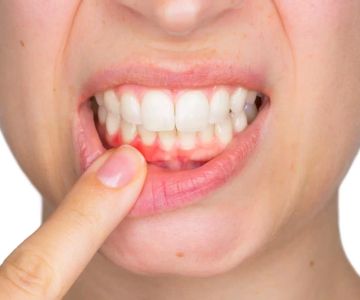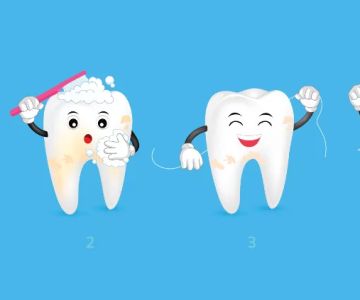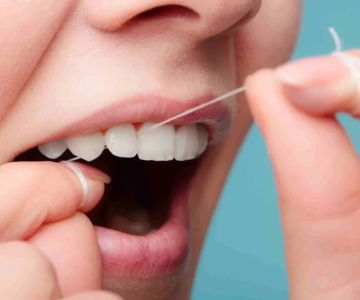Understanding the Importance of Dental X-rays for Your Dental Health
- What Are Dental X-rays?
- How Dental X-rays Help Diagnose Dental Issues
- Different Types of Dental X-rays
- When Are Dental X-rays Needed?
- The Benefits of Dental X-rays
- Precautions and Safety Measures
- Final Thoughts on Dental X-rays
1. What Are Dental X-rays?
Dental X-rays, also known as dental radiographs, are images of the interior of your teeth and gums. These images are crucial in identifying issues that are not visible during a routine dental examination, such as cavities between teeth, impacted teeth, infections, and bone loss. Using high-frequency radiation, dental X-rays help capture detailed images of your teeth, roots, and jaw, aiding your dentist in diagnosing and treating a range of dental conditions.
Unlike traditional X-rays used in other medical fields, dental X-rays are specifically designed to target and capture images of your teeth, gums, and surrounding bone structure. This allows your dentist to pinpoint problems that may be lurking beneath the surface and make treatment decisions accordingly.
2. How Dental X-rays Help Diagnose Dental Issues
Dental X-rays play a vital role in helping dentists diagnose and treat a variety of dental conditions. Some of the key ways dental X-rays contribute to diagnosis include:
- Detecting Cavities: X-rays can reveal cavities that aren't visible to the naked eye, particularly those between teeth or under fillings. This early detection helps prevent the need for more extensive treatments later on.
- Identifying Gum Disease: X-rays help identify signs of gum disease, such as bone loss, which may not show up during a physical examination. Early detection of gum disease is crucial for effective treatment and prevention of tooth loss.
- Assessing Tooth Development: For children, X-rays are useful in monitoring the development of their adult teeth and ensuring that teeth are coming in properly. They can also help identify potential issues such as crowding or alignment problems.
- Checking for Infections: Infections in the tooth's pulp or bone can be seen on an X-ray before symptoms like pain occur. This helps prevent more serious complications.
- Planning Dental Treatments: Dental X-rays are essential for treatment planning, especially for procedures like root canals, dental implants, and orthodontics. By understanding the structure of the teeth and gums, dentists can determine the best approach for treatment.
3. Different Types of Dental X-rays
There are several types of dental X-rays, each suited for specific purposes. Your dentist will recommend the appropriate type depending on your needs and the area of concern:
- Intraoral X-rays: These are the most common type of dental X-rays. They capture images inside the mouth, showing the teeth and bone structure. Types of intraoral X-rays include:
- Periapical X-rays: These provide a detailed image of one or two teeth, showing the entire tooth from the crown to the tip of the root.
- Bitewing X-rays: Used to detect decay between teeth and assess bone loss due to gum disease.
- Occlusal X-rays: Used to capture the overall image of the upper and lower teeth in a single frame, typically for assessing developmental issues in children.
- Extraoral X-rays: These X-rays are taken outside the mouth and are typically used for capturing images of the jaw, skull, and sinuses. The most common extraoral X-rays are:
- Panoramic X-rays: A broad image of the entire mouth, teeth, and jaw, often used for planning orthodontic treatments or identifying impacted teeth.
- Cephalometric X-rays: A side-view image of the head, commonly used in orthodontics to evaluate facial structure and jaw alignment.
4. When Are Dental X-rays Needed?
Dental X-rays are typically recommended during routine dental exams, especially if your dentist suspects underlying dental issues. The frequency of X-rays depends on your age, dental health, and risk factors. Some common situations where dental X-rays are necessary include:
- Initial Visit: For new patients, X-rays are often taken to establish a baseline and assess existing conditions.
- Routine Checkups: During regular visits, X-rays help detect cavities, gum disease, and other potential issues.
- Unexplained Pain: If you experience tooth pain or discomfort that doesn't seem to have a clear cause, X-rays can help identify issues like infections or abscesses.
- Orthodontic Planning: X-rays are essential for assessing the alignment and development of teeth before orthodontic treatments like braces or retainers.
While X-rays are important for diagnosing dental problems, your dentist will determine the frequency based on individual needs to minimize radiation exposure.
5. The Benefits of Dental X-rays
Dental X-rays offer several benefits that are crucial for maintaining good dental health:
- Early Detection of Dental Problems: The ability to catch dental issues early can save you time, money, and discomfort. By identifying problems like cavities or infections early, your dentist can address them before they become more serious.
- Better Treatment Planning: X-rays provide essential information for developing a comprehensive treatment plan, ensuring that procedures like fillings, crowns, or implants are done effectively.
- Minimized Risk of Tooth Loss: By identifying gum disease, cavities, and infections early, dental X-rays can prevent tooth loss by allowing for prompt treatment.
6. Precautions and Safety Measures
While dental X-rays are a valuable tool in maintaining oral health, safety precautions are always taken to minimize exposure to radiation. Modern dental X-rays use minimal radiation, and protective measures such as lead aprons and thyroid collars are used to shield the body. Additionally, dentists ensure that X-rays are only taken when necessary to avoid unnecessary exposure.
7. Final Thoughts on Dental X-rays
Dental X-rays are an indispensable tool in modern dentistry. They provide a clear view of your oral health, helping to detect and prevent issues before they become major problems. By undergoing regular dental X-rays as part of your routine dental visits, you can maintain healthier teeth and gums for years to come.
For more information on dental X-rays or to book your next dental appointment, visit Dentistry Toothtruth for expert dental care and advice.







 Westgate Dental Arts3.0 (2 review)
Westgate Dental Arts3.0 (2 review) Coventry Family Dental4.0 (247 review)
Coventry Family Dental4.0 (247 review) Familia Dental3.0 (1028 review)
Familia Dental3.0 (1028 review) Dr. Daniel S. Fife, DDS4.0 (31 review)
Dr. Daniel S. Fife, DDS4.0 (31 review) Dentistry At Suburban Square: Michael I. Wollock, DMD4.0 (1228 review)
Dentistry At Suburban Square: Michael I. Wollock, DMD4.0 (1228 review) Comfort Care Dental4.0 (1156 review)
Comfort Care Dental4.0 (1156 review) The Importance of Oral Health Education During Pregnancy for a Healthy Pregnancy
The Importance of Oral Health Education During Pregnancy for a Healthy Pregnancy Why Skipping Dental Checkups Can Lead to Bigger Oral Health Problems
Why Skipping Dental Checkups Can Lead to Bigger Oral Health Problems Best Tips for Brushing Your Teeth Properly for Healthy Gums: Essential Techniques for Oral Health
Best Tips for Brushing Your Teeth Properly for Healthy Gums: Essential Techniques for Oral Health Advantages of Porcelain Dental Restorations
Advantages of Porcelain Dental Restorations How Can Diabetes Cause Tooth and Gum Problems? Preventing and Managing Oral Health Issues
How Can Diabetes Cause Tooth and Gum Problems? Preventing and Managing Oral Health Issues Healthy Habits for Promoting Good Oral Health and Hygiene: Tips for a Healthy Smile
Healthy Habits for Promoting Good Oral Health and Hygiene: Tips for a Healthy Smile